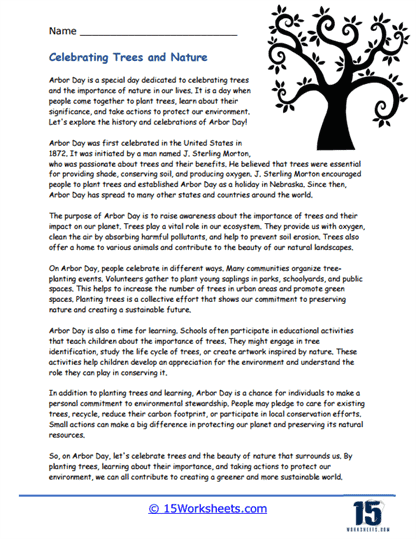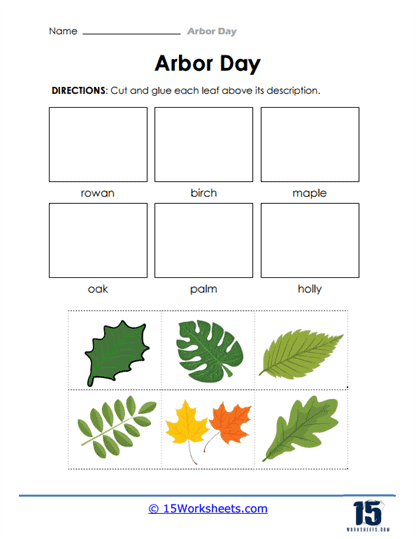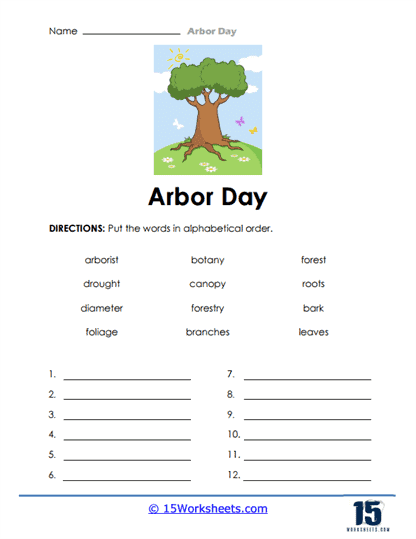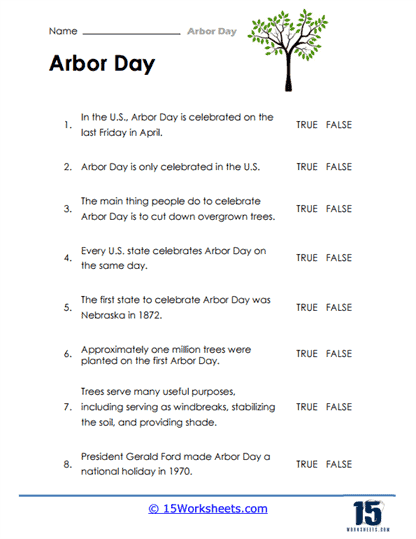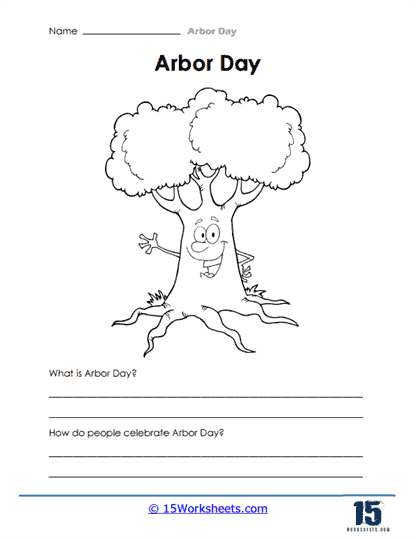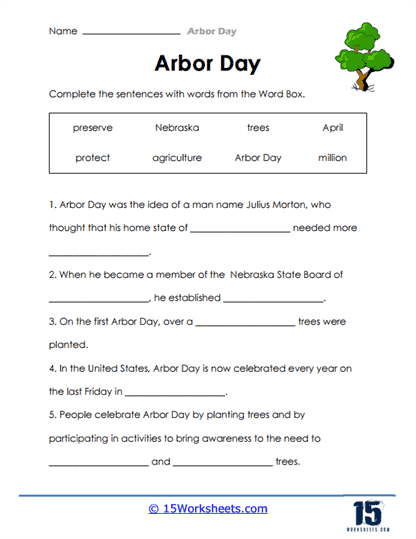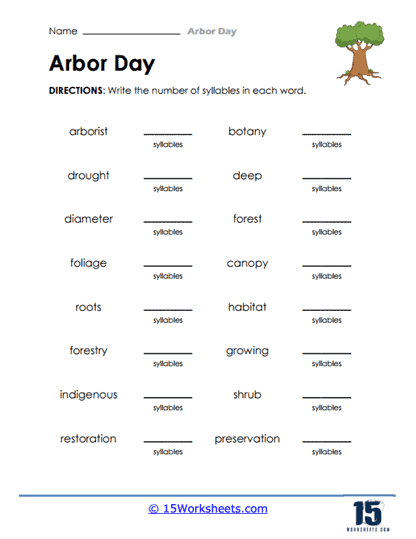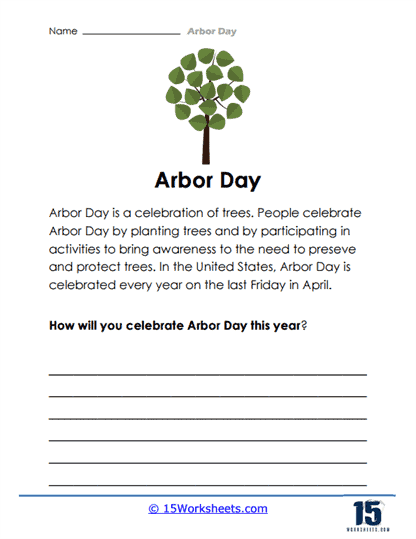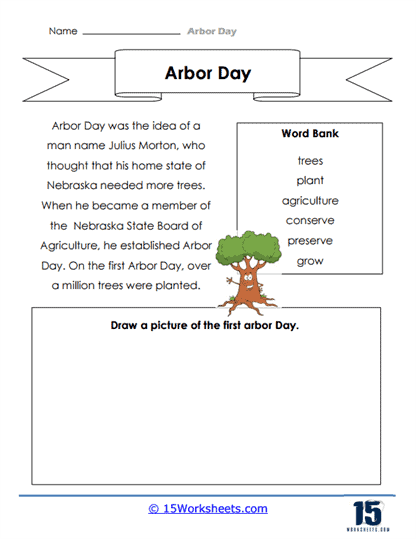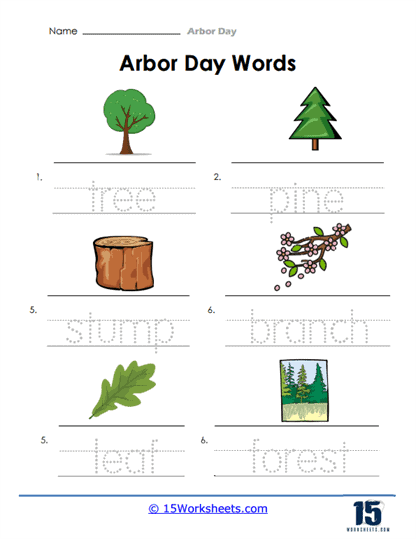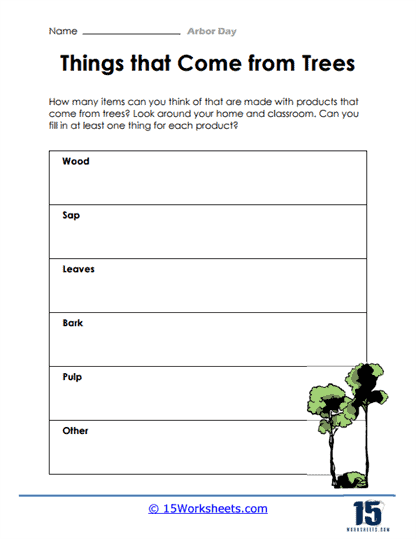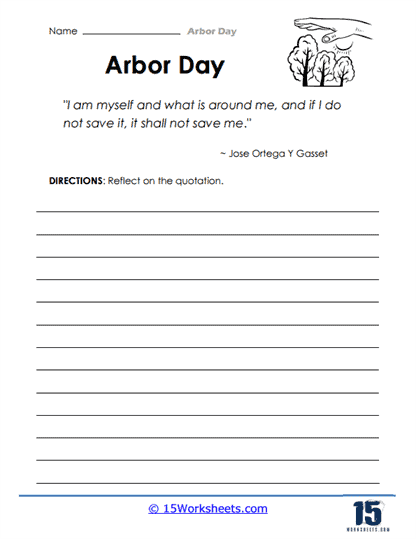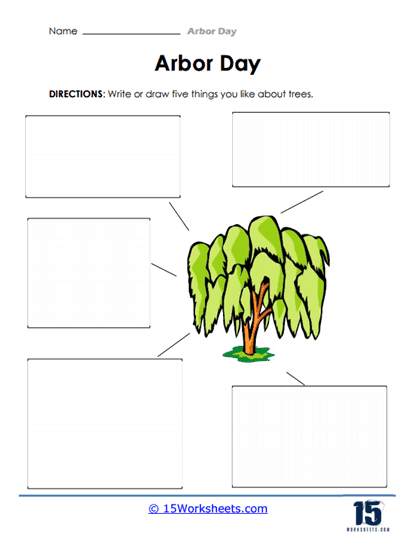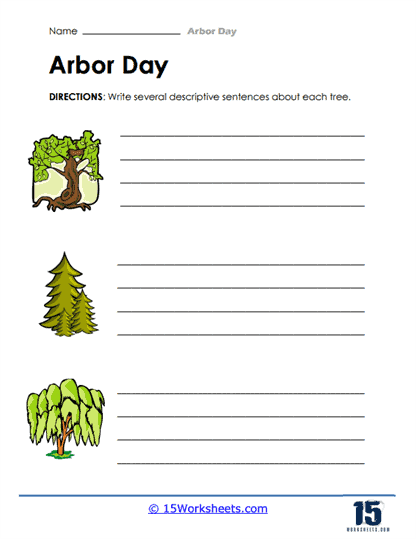Arbor Day Worksheets
All About These 15 Worksheets
The Arbor Day worksheet collection on 15Worksheets.com offers a diverse and engaging array of activities designed to educate students about the significance of trees and environmental stewardship. With 15 thoughtfully crafted worksheets, the collection encompasses a range of topics from tree identification and anatomy to the ecological benefits of trees. Activities such as “Tree Study” and “Observing Trees” encourage students to explore their natural surroundings, fostering a hands-on learning experience that highlights the importance of trees in our ecosystem.
Beyond scientific exploration, the collection integrates literacy and critical thinking exercises that promote environmental awareness. Worksheets like “Descriptive Writing,” “Counting Syllables,” and “Word Box Challenge” blend language arts skills with ecological themes, enabling students to articulate their understanding of nature creatively. Interactive elements such as the “True or False Quiz” and “Know Your ABCs” provide opportunities for students to assess their knowledge and reinforce learning in an enjoyable manner.
This comprehensive suite of worksheets is tailored to accommodate various educational levels, making it a valuable resource for educators aiming to instill a sense of environmental responsibility in their students. By combining scientific inquiry with creative expression, the Arbor Day worksheets from 15Worksheets.com serve as an effective tool to inspire young learners to appreciate and protect the natural world around them.
Arbor Day is a day dedicated to the planting and caring for trees. Its name comes from the Latin “arbor,” meaning tree. The celebration reflects a long-standing human understanding of how important trees are for our survival and well-being. Not only do trees provide oxygen, shade, and resources like wood and food, but they also play a vital role in biodiversity, climate regulation, and even our mental health.
Why Do We Celebrate Arbor Day?
Arbor Day is a celebration of trees and their immense importance to our environment and our lives. It provides a special opportunity for individuals, organizations, and communities to come together and plant trees. This day allows us to replenish and maintain our forests, parks, and urban tree canopies. It emphasizes the importance of conservation, environmental stewardship, and the value of nature in our daily lives.
The History Behind It
The first Arbor Day was celebrated in Nebraska on April 10, 1872. Its inception is credited to Julius Sterling Morton, a Nebraska journalist and politician who served as President Grover Cleveland’s Secretary of Agriculture. Morton, a nature lover, felt that Nebraska’s landscape and economy would benefit from the widespread planting of trees. He proposed that a special day be set aside for the planting of trees and through his position as a member of Nebraska’s state board of agriculture, he was able to pass a resolution declaring April 10, 1872, as Arbor Day.
This first Arbor Day was a huge success, with an estimated one million trees planted in Nebraska. Prizes were offered to counties and individuals for planting properly the largest number of trees on that day. It was so effective that, by 1885, Arbor Day was declared a legal holiday in Nebraska and April 22, Morton’s birthday, was selected as the date for its permanent observance.
The concept of Arbor Day spread from Nebraska to other states and eventually to other countries. Today, Arbor Day is celebrated around the world on different dates, usually timed for the optimal tree-planting conditions in each region.
Deep Facts about Arbor Day
Arbor Day reminds us of the vital importance of trees. One large tree can provide a day’s supply of oxygen for up to four people. Trees also improve air quality by absorbing pollutants, provide habitat for wildlife, and play a critical role in combatting climate change by storing carbon. Additionally, trees conserve water, prevent soil erosion, and create a calming aesthetic for our communities and cities.
The Arbor Day Foundation, founded in 1972 on the centennial of the first Arbor Day, is a nonprofit dedicated to planting trees. The organization has grown to become the largest nonprofit membership organization dedicated to planting trees, with over one million members, supporters, and partners in the United States.
What is the Difference between Arbor Day and Earth Day?
While both Arbor Day and Earth Day have environmental focus, they are distinct in their origins, celebrations, and scope.
Earth Day, celebrated on April 22nd, was first observed in 1970 in the United States and has since become a global event coordinated by the Earth Day Network. It involves events and activities aimed at addressing a wide range of environmental issues, from pollution to conservation to climate change. Earth Day’s mission is broad and all-encompassing, looking at the planet’s health as a whole.
Arbor Day, on the other hand, has a more specific focus – trees. The goal of Arbor Day is to encourage people to plant and care for trees. While the overall environmental health of the planet is also a concern of Arbor Day, the focus is primarily on the conservation and proliferation of trees.
Despite their differences, both Earth Day and Arbor Day share common goals – to inspire awareness and appreciation for the earth’s environment, to highlight our responsibility to care for the world in which we live, and to encourage action towards preserving our natural resources. In fact, they complement each other well – one focusing on the big picture, and the other emphasizing an essential component of our ecosystem.
Arbor Day is more than just a day for planting trees. It’s a celebration of the important role that trees play in our environment and our lives. It’s an opportunity to learn, to contribute, and to appreciate the beauty and value of nature. It’s a chance to think about our future, the future of our planet, and the legacy we’ll leave for the generations to come. Celebrating Arbor Day is a small act that has a big impact, embodying the belief that every tree counts, and so does every effort to protect our environment.

